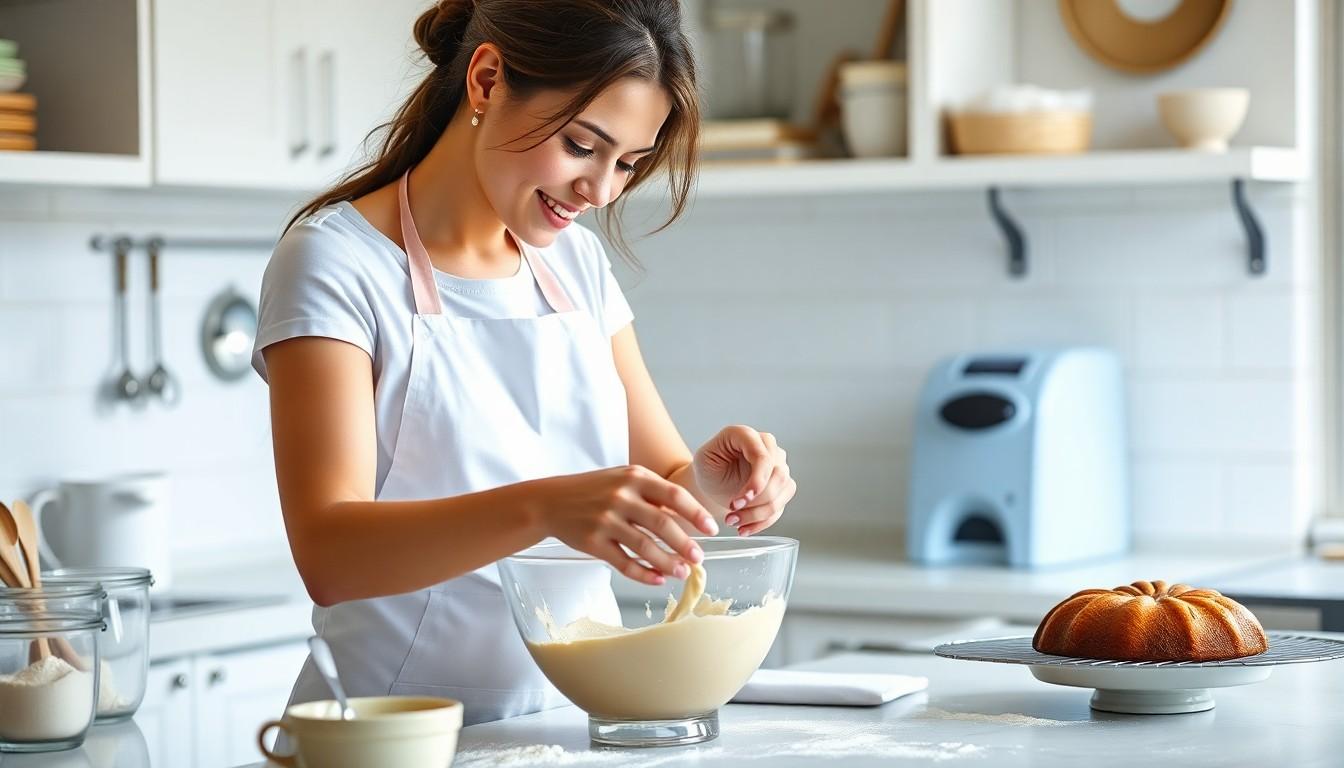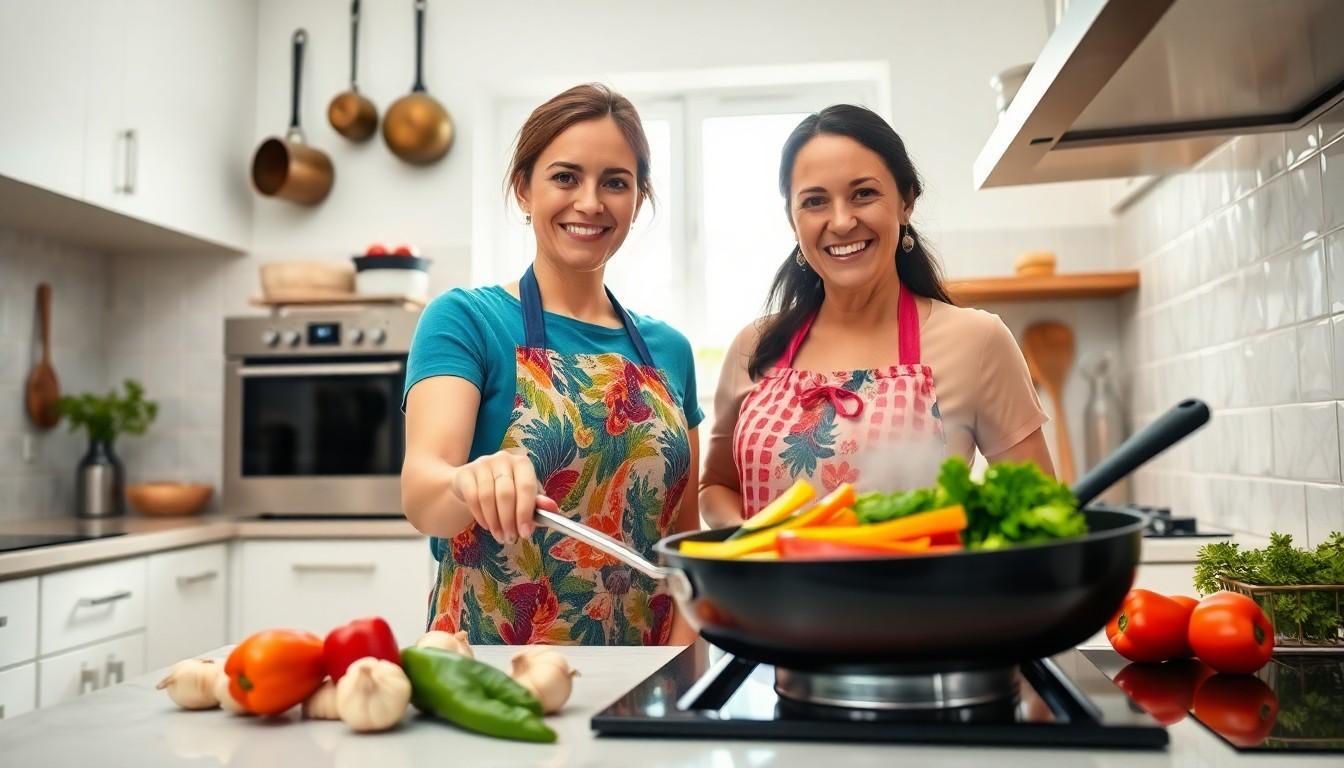Cooking can feel like a daunting task, but it doesn’t have to be. With the right techniques, anyone can transform a simple meal into a culinary masterpiece. Whether it’s mastering the art of sautéing or perfecting the timing for that mouthwatering roast, these techniques are the secret ingredients to culinary success.
Techniques For Cooking
Sautéing represents a quick and effective method for cooking food while preserving flavor and nutrients. Using medium to high heat, this technique involves cooking food in a small amount of oil or fat. It’s essential to keep the ingredients moving in the pan for even cooking and to avoid burning.
Roasting provides a versatile option for preparing a variety of foods, from meats to vegetables. By placing food in an oven, dry heat surrounds it, resulting in caramelization and enhanced flavors. Timing plays a crucial role; thick cuts of meat may require longer cooking times at lower temperatures, while vegetables benefit from higher temperatures for shorter periods.
Grilling offers a distinct smoky flavor that many enjoy. It requires a grill, either gas or charcoal, and involves cooking food over direct heat. The process creates grill marks and seals in juices, making it perfect for meats and vegetables alike.
Braising combines wet and dry heat, making it ideal for tougher cuts of meat. First, brown the meat in a pan, then add liquid and cover it to allow slow cooking. This method breaks down collagen, resulting in tender and flavorful dishes.
Steaming emphasizes health by using water vapor to cook food. Equipment such as a steamer basket or electric steamer delivers this method effectively, maintaining nutrients and moisture. It works well for vegetables, fish, and dumplings.
Lastly, baking stands as a fundamental cooking technique that employs dry heat from an oven. It suits a range of dishes from bread to casseroles. Understanding proper oven temperatures and timing leads to perfectly baked outcomes.
By mastering these techniques, anyone can elevate meals with ease and confidence.
Baking Techniques
Baking involves precise techniques that turn simple ingredients into delicious creations. Mastering these techniques lays the foundation for successful baking.
Essential Baking Skills
Understanding measurements is crucial in baking. Accurate measuring of ingredients ensures consistent results. Mixing methods vary; creaming butter with sugar leads to light textures, while folding gently maintains airiness. Proper oven temperature control contributes to even baking. Timing matters; overbaking can ruin a dessert. Finally, knowing when to check doneness can prevent disappointment.
Popular Baking Methods
Several popular baking methods produce unique outcomes. Convection baking circulates hot air for even cooking, ideal for pastries. Using a water bath creates gentle heat, perfect for cheesecakes and custards. Blind baking sets crusts before adding fillings, preventing sogginess. Sheet baking offers versatility for cookies or bars, allowing for quick preparation. Finally, no-bake methods work well for desserts like mousse, providing easy alternatives when heat isn’t desired.
Grilling Techniques
Grilling offers a unique way to cook food outdoors, bringing out flavors that other methods cannot match. Mastering grilling techniques enhances the overall culinary experience.
Types of Grills
Charcoal grills deliver intense heat and a distinct smoky flavor. Gas grills provide convenience with instant heat and adjustable temperature controls. Electric grills offer portability, ideal for small spaces or apartments. Pellet grills combine convenience with flavor, using wood pellets for smoking. Each grill type has its advantages and can influence the grilling outcome, allowing cooks to choose based on their preferences and needs.
Grilling Tips and Tricks
Prepare food by marinating for at least 30 minutes to enhance flavor. Preheating the grill helps achieve proper searing. Use a two-zone cooking method for better heat control, allowing for both direct and indirect cooking. Flip food only once during grilling to maximize caramelization. Always let food rest for a few minutes after grilling to keep juices intact. Keeping a spray bottle of water handy manages flare-ups effectively.
Sautéing Techniques
Sautéing offers a quick method for cooking that retains both flavor and nutrients. Mastering the right equipment and avoiding common mistakes enhances this culinary skill.
Proper Equipment
Using the right tools simplifies sautéing. A sturdy skillet or sauté pan made from stainless steel or cast iron holds heat well. Non-stick pans also help to prevent food from sticking, making cleanup easier. Selecting a good-quality spatula ensures proper flipping and stirring of ingredients. A lid can aid in steaming food or reducing splatter. Additionally, a heat source with adjustable settings provides better control over cooking temperature. For safety and efficiency, always use utensils made from heat-resistant materials.
Common Mistakes to Avoid
For successful sautéing, avoiding common pitfalls is essential. Overcrowding the pan inhibits browning and lead to steaming instead. Using oil at the wrong temperature may cause food to stick or burn, so heat it before adding ingredients. Neglecting to prep ingredients beforehand results in uneven cooking times. Ignoring the importance of stirring leads to some food pieces cooking faster than others. Finally, not allowing food to rest post-cooking diminishes flavors. By addressing these errors, cooks can achieve perfectly sautéed dishes.
Steaming Techniques
Steaming offers a simple and effective method for cooking that retains the natural vibrancy of food. This technique uses water vapor, preserving nutrients and enhancing flavors without the need for added fats.
Benefits of Steaming
Steaming provides numerous health benefits. Nutrient retention remains a key advantage; vitamins and minerals stay intact, unlike methods that involve boiling. Weight management is supported since steaming eliminates the need for oils while keeping food light. This technique also promotes better digestion, as gentle cooking helps break down food without degrading quality. The method suits various foods, from vegetables and fish to grains. Additionally, steaming offers a simple cooking process, reducing cleanup compared to frying or sautéing.
Equipment Required
Essential equipment for steaming includes a steamer basket, a stockpot, or a steaming appliance. A steamer basket fits into a pot, allowing steam to circulate around food. Bamboo steamers offer a traditional option, suitable for dumplings and vegetables. Electric steamers provide a convenient way to cook multiple dishes simultaneously. Microwaves with steaming capabilities simplify the process further. Ensure proper sizing and material, as these factors influence heat retention and cooking efficiency. Having a lid that fits tightly is crucial for creating steam.
World of Culinary Possibilities
Mastering various cooking techniques opens up a world of culinary possibilities. By understanding methods like sautéing roasting grilling and baking anyone can transform everyday meals into unforgettable experiences. Each technique offers unique benefits that can enhance flavors and improve nutrition.
Whether it’s the quick precision of sautéing or the slow tenderness achieved through braising embracing these skills fosters creativity in the kitchen. With practice and attention to detail cooks can elevate their confidence and satisfaction in preparing meals. Ultimately these techniques not only simplify cooking but also make it a more enjoyable and rewarding endeavor.

